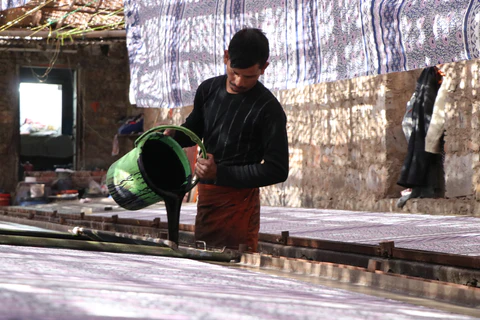The Rise of Sustainable Fashion: Why Eco-Friendly Clothing is Here to Stay
- Pledger

- Apr 12, 2023
- 5 min read
Updated: Sep 25, 2024
Sustainable fashion has been on the rise as consumers become increasingly aware of the negative impact of fast fashion on the environment and society. With eco-friendly brands gaining popularity, consumers have more options to make conscious fashion choices that support a better future for the planet and its people.

The Problem with Fast Fashion
The rise of social media platforms (such as Instagram) in the 2000s has had a significant impact on the fashion industry. With the ability to easily share photos and videos, fashion influencers and bloggers have been able to showcase different fashion styles and trends to a wider audience than ever before. This has led to increased consumer awareness of different fashion options and has also contributed to the rise of fast fashion.
While fast fashion brands like H&M can provide consumers with access to the latest fashion trends at an affordable price, they also have significant negative impacts on the planet. Accounting for 10% of global greenhouse gas emissions and producing 92 million tons of textile waste each year. Consumers are shifting away from fast fashion due to concerns about the environment and society, with many seeking out sustainable and ethical alternatives.
Fashion Brands Being Eco-Friendly
With the increasing awareness of the impact of fashion on the environment, it is essential for clothing brands to prioritize eco-friendliness and build robust CSR strategies. Popular brands like Levi's and Timberland are the pioneering brands that have been adopting sustainable practices since the 1990s, such as using organic or recycled materials, reducing waste, and minimizing the carbon footprint of their production processes, clothing brands can contribute to a cleaner and healthier planet. Thankfully there are new practices and technologies available to help brands be more sustainable
Nowadays, adopting sustainability is a key to survival for brands because consumers are becoming more conscious of the environmental impact of their purchases. Becoming a more sustainable brand is in line with customer demand. However, it also helps businesses save money long term and will be necessary to fit with incoming government regulations.

Looking for planet-friendly ideas for Black Friday? Check out these articles on our site
How to Shop Sustainably Online
Sustainable online shopping involves conscious choices and research to find eco-friendly clothing brands. Consumers can look for brands that use sustainable materials like organic cotton or recycled polyester and prioritise ethical production practices, such as fair labour standards. They can also use filters when shopping online to find eco-friendly options and choose brands that offer sustainable packaging and shipping.
In addition, consumers can consider secondhand or rental options, which help reduce waste and extend the life of clothing. Websites like ThredUp and Rent the Runway offer a variety of clothing options at affordable prices, making sustainable fashion accessible to a wider range of consumers.
Prioritising Planet and People
AYM practises sustainable fashion by using eco-friendly materials like organic cotton, recycled polyester, and Tencel, and prioritising ethical production practices that ensure fair wages and safe working conditions for their workers. Additionally, the brand offers a recycling program for its clothing, promoting circularity and reducing waste in the fashion industry.
Check out their online store - every single product has a positive impact somewhere.
Zero-waste Handmade Products
Dilli Grey is a Winner of the 2019 'Best Ethical Brand' in the Good Web Guide Awards, a clothing brand that promotes sustainable fashion through its production processes and materials. The brand uses traditional Indian production methods that prioritise sustainability and ethics, such as using natural dyes and handloom weaving techniques.
They partnered with multiple charities to carry their ethical manifesto, such as the India COVID Relief Fund in 2020 and the Ukraine Red Cross appeal in 2022.
Check out some causes to donate to
Charities and Organisations Promoting Sustainable Fashion
While many businesses are working to become more sustainable, there are already a number of great non-profit organisations that have been putting in the hard work to right some of the wrongs of the fast fashion industry.
Dirt
DIRT is a non-profit working to regenerate soil and promote biodynamic agriculture. The organisation supports regenerative farming projects around the world and works to educate people on the importance of soil health.

Or Foundation
The Or Foundation are a 501(C)(3) public charity in the USA and a registered charity in Ghana that has been operating in both countries since 2011. Their mission is to identify and manifest alternatives to the dominant model of fashion – alternatives that bring forth ecological prosperity, as opposed to destruction, and that inspire citizens to form a relationship with fashion that extends beyond their role as consumers.

Check out some other causes to donate to
Fashion Revolution
Fashion Revolution is a global movement that was founded in the UK in 2013. The organisation campaigns for a more transparent and sustainable fashion industry, with a focus on the social and environmental impact of clothing production.
They run a range of initiatives, including their annual Fashion Revolution Week, which encourages consumers to ask brands #whomademyclothes and promotes transparency in the fashion supply chain.

Oxfam
Oxfam is a well-known charity that runs a range of sustainable fashion initiatives. The charity operates a clothing reuse and recycling program, where donated clothing is either sold in Oxfam shops or recycled into new clothing. Oxfam also operates a sustainable fashion blog, which provides tips and resources for consumers looking to shop sustainably.

Check out some other causes to donate to
Support Causes from sales with store and checkout donations. Virtue is an easy to set up fundraising app for eCommerce brands built on Shopify, WooCommerce and Magento. Choose from over 20,000 Causes!

















Comments